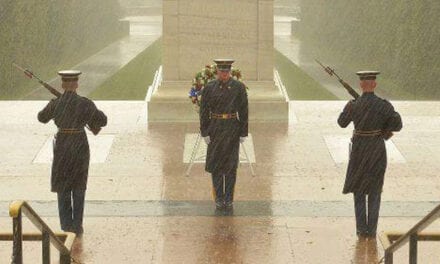Everyone’s entitled to one good scare, eh?
—“Halloween,” 1978
Halloween is frighteningly easy.
You don’t have to be thankful, you don’t have to be joyful, and you don’t have to grill anything. Halloween lets you be you. It’s like a college dorm party—drop in for five minutes or stay all night. Halloween doesn’t ask for more than you’re ready to give, and even a small investment will be repaid tenfold in sweet, sweet fear.
For most purposes, fear comes in two flavors—bad fear and good fear. Bad fear feels bad. It’s mortal terror, the kind you might experience when a bear wanders into your camp or a tornado tears off your roof. Bad fear triggers your instinctive fight or flight response, which is actually good. Your heart rate soars, adrenaline and cortisone flood your veins, blood races to your extremities. In an instant you’re transformed into a lean, mean fighting/fleeing machine, ready to vanquish or evade the threat or die trying. You’d find the sensation quite pleasurable if you weren’t so scared.
Good fear is really just artificially induced bad fear, the kind you get from a roller coaster ride or a midnight cemetery crawl. Your conscious brain knows you’re safe enough, but your subconscious brain doesn’t believe it. You get the same electric fight/flight rush, followed by a warm wave of mild euphoria when you don’t die. Good fear feels good, and that’s the gift of Halloween.
Most people get their good fear fix from horror movies, which have been around since at least 1896 when French director Georges Melies released the short film “Le Manoir du Diable,” or “House of the Devil,” and our appetite for the outré has only grown. Not quite 70 horror movies were produced in the 1930s, including the peerless “Son of Frankenstein” (1939). About 230 horror movies were released in the year 1990 (“Arachnophobia”), 358 in 2000 (“Psycho Beach Party”) and 874 in 2006 (“Easter Bunny, Kill! Kill!”). More than half of all horror movies are Made in the U.S.A., and more than half of them are lousy. But, be they boffo or abominable, all horror films are built around the same thing: the monster.
I’ve seen enough horror movies to know that any weirdo wearing a mask is never friendly.
—“Friday the 13th Part VI: Jason Lives”
For efficiency’s sake, movie monsters are usually things we’re already scared of, like unfriendly ghosts (“The Amityville Horror,” 2005), unfriendly extraterrestrials (“Invasion of the Body Snatchers,” 1978) and unfriendly ex-girlfriends (“Attack of the 50 Foot Woman,” 1958). But they can be almost anything unfriendly including, but not limited to, contrary children (“Village of the Damned,” 1960), a hurtful gaze (“The Crawling Eye,” 1958), big crumbly rocks (“The Monolith Monsters,” 1957) and Satan (“The Omen,” 1976).
Times were, Universal’s cast of classic creepies dominated the silver screen. Times are, it’s getting harder to get a rise out of today’s sophisticated moviegoer with mere mummies, witches and werewolves. In order to keep up with evolving public phobias, fright flicks have expanded into semi-plausible real-world bugaboos like timid momma’s boys (“Psycho,” 1960), bullied prom queens (“Carrie,” 1976), boundary-challenged admirers (“Misery,” 1990) and adventurous epicures (“The Silence of the Lambs,” 1991).
As you might expect, October is a particularly fertile season for horror flicks. New terror on tap this month includes teen slasher “There’s Someone Inside Your House,” time-twisting “Last Night in Soho,” and “Halloween Kills” which, in case you’re counting, is No. 12 for the Halloween movie franchise and, in case you’re wondering, won’t be the last. And check out “Lamb,” an indie that opened in American theaters on Oct. 8 and involves a human child born with the head of a sheep. Filmed in Iceland using the local lingo, “Lamb” promises all the stark grandeur of that scenic island and all the horror of English subtitles.
Like anything artistic, scary movies are largely a matter of taste. So why does one leave you in a pool of sweat while another leaves you groaning into your popcorn? What makes “The Blair Witch Project” (1999) more bone-chilling than “Slither” (2006)? Psychologists will tell you that it’s not what you see that scares you—it’s what you don’t.
There is no terror in the bang, only in the anticipation of it.
—Alfred Hitchcock
Released in 1982, “The Thing” features a dynamite Technicolor monster created with groundbreaking special effects that can still hold their own against the 21st Century’s best CGI. No question, “The Thing” is a great horror movie. It’s also a remake of the 1951 sci-fi thriller “The Thing from Another World,” which tells exactly the same story in black and white using virtually no special effects at all. In fact, you never actually see the monster. The remake is cool, yes, but the original is way, way scarier.
That’s because a fundamental element of fear is uncertainty. Feeling threatened by the unknown, your brain desperately tries to identify, classify and quantify the enemy. When it can’t, it does anyway, madly building and rebuilding worst-case scenarios out of primal fears and subconscious dreads. The longer the suspense continues, the greater the anxiety, and the greater the anxiety, the more terrible the imaginings. It’s why we’re afraid of the dark, the bump in the night, the monster under the bed. In broad daylight or a darkened theater, nobody knows what scares you better than you do, and a good horror movie can sustain the suspense until you’ve worked yourself into a proper panic. The instant a monster is revealed, uncertainty vanishes like Claude Rains (“The Invisible Man,” 1933). You may still feel shock, alarm, disgust, even admiration, but fear will have fled.
Halloween puts you in the driver’s seat (“Christine,” 1983). You don’t have to wear a costume if you don’t want to (“The Mask,” 1961), you don’t have to bake four dozen hand-iced jack-o-lantern cookies (“The Gingerdead Man,” 2005), you don’t even have to hand out candy to trick-or-treaters (“The Other Side of the Door,” 2016), although failure to do so will surely brand you (“The Ogre,” 1988) with the neighborhood kids.
There’s no mountain of extra dishes to do on Halloween, no pile of credit card bills, no compulsory romance or accidental arsons. Keeping Halloween well is as easy as One (“Missed Call,” 2008) Two (“Faces of Dr. Jekyll,” 1960) Three (“-Headed Shark Attack,” 2015). To keep Halloween well, just dial up a creature feature and get your fright on.
Be afraid. Be very afraid.
—“The Fly,” 1986.










